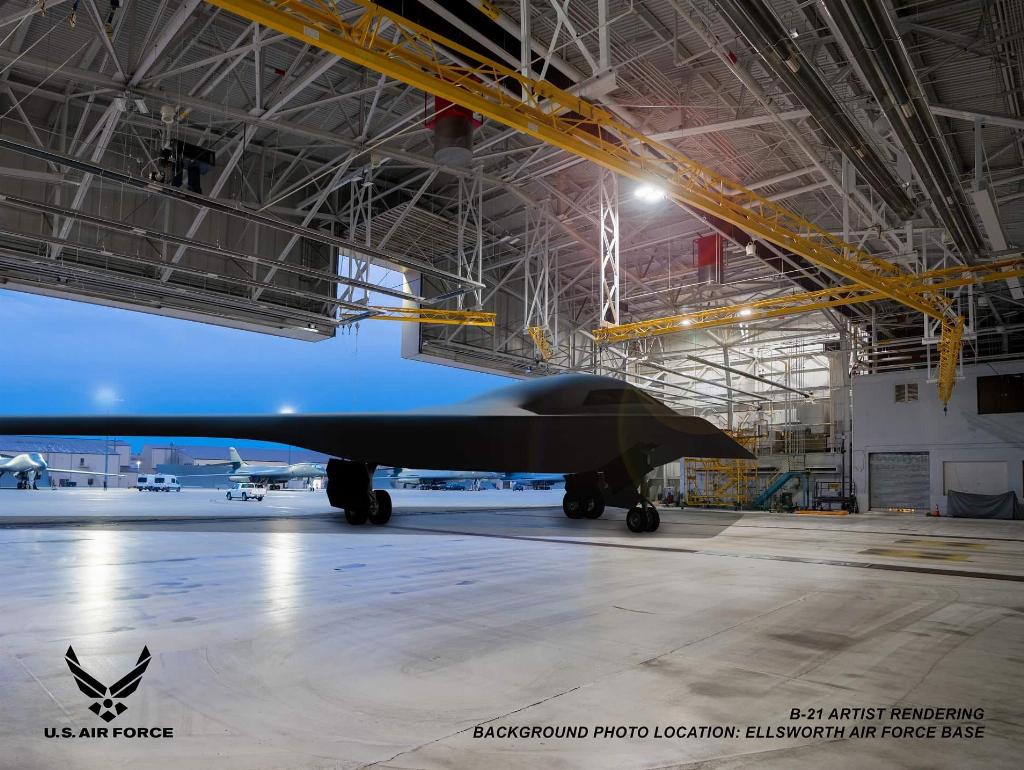US Air Force reveals more on B-21 Raider stealth bomber

The B-21 Raider programme continues to progress through engineering and manufacturing as legacy B-1 bombers are retired to make room for the new aircraft.
One visible example of progress was the recent construction and installation of a temporary prototype environmental protection shelter at Ellsworth Air Force Base.
Various prototype shelters are being tested to identify the most effective and affordable designs that could be used across all three B-21 main operating bases, the depot, and even at forward operating locations.
“Environmental Protection Shelters help extend the life of the aircraft and reduce required maintenance by limiting UV exposure, limiting snow accumulation and melt, and limiting icing/de-icing operations experienced by the aircraft over time,” said Col. Derek Oakley, AFGSC’s B-21 Integration and System Management Office director. “These shelters also help us generate sorties more quickly by eliminating the need to always have to move aircraft in and out of hangars.”
Related: US Air Force briefing says the B-21 is on time, on schedule
A photo released by US Air Force (USAF) shows the scale of the shelter, and it has been confirmed it is 200ft wide. Although the dimensions of the strategic bomber have never been revealed, the shelter is meant to house the entire aircraft and points to a similar wingspan to its B-2 counterpart, which is 172ft.

USAF says the B-21 has been designed with sustainment and maintainability as a top priority.
“From the outset, we codified robust sustainability and maintainability requirements, and continue to keep those at the forefront throughout the design and development phase of the B-21 Raider program,” said Col. Jason Voorheis, B-21 System Program director and acquisition lead for the bomber program within the Department of the Air Force RCO. “Throughout the engineering and manufacturing development phase, sustainment and maintenance personnel have been integrated into every design decision we make to ensure technical solutions do not inadvertently result in sub-optimal sustainment outcomes once the weapon system is fielded.”
Related: US Air Force just revealed a first look at its new fighter jet
USAF has also revealed it is retiring 17 B-1B Lancers from its current fleet as it prepares for the B-21 to come online. The aircraft will be retired from the current fleet of 62 B-1s, leaving 45 in the active fleet. Of the 17 B-1 aircraft, four will be required to remain in a reclaimable condition.
“Beginning to retire legacy bombers, to make way for the B-21 Raider, is something we have been working toward for some time,” said Timothy Ray, commander of Air Force Global Strike Command. “Due to the wear and tear placed on the B-1 fleet over the past two decades, maintaining these bombers would cost tens of millions of dollars per aircraft to get back to status quo. And that’s just to fix the problems we know about. We’re just accelerating planned retirements.”












